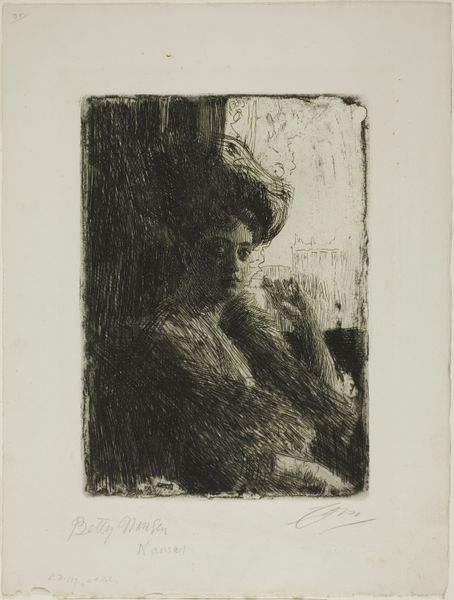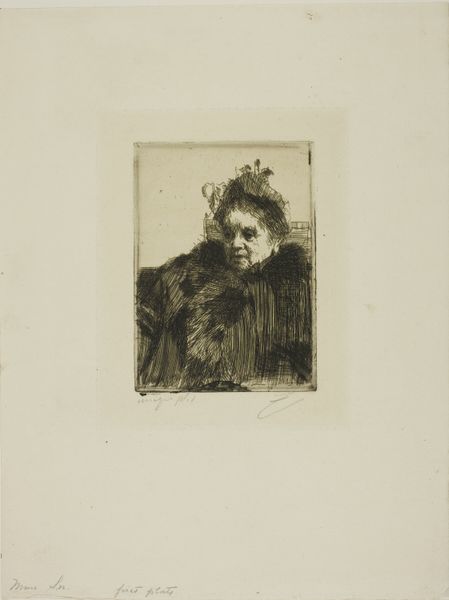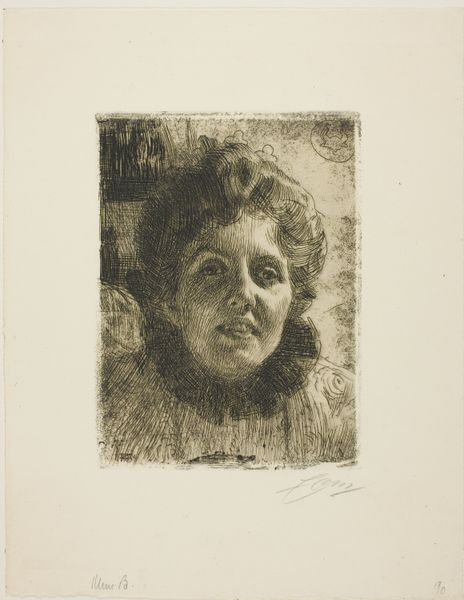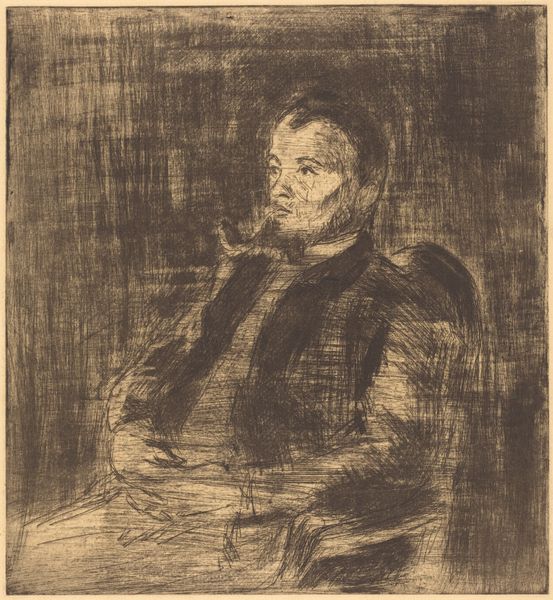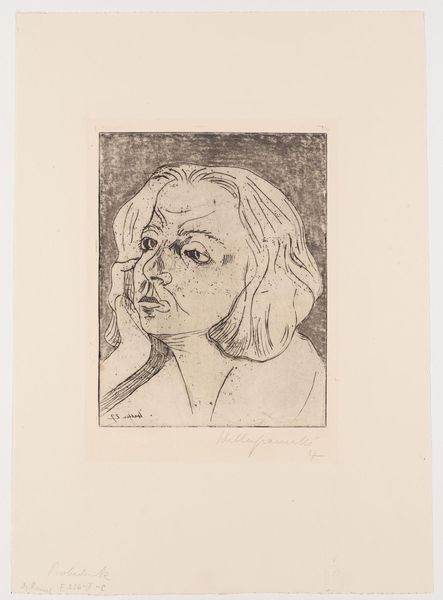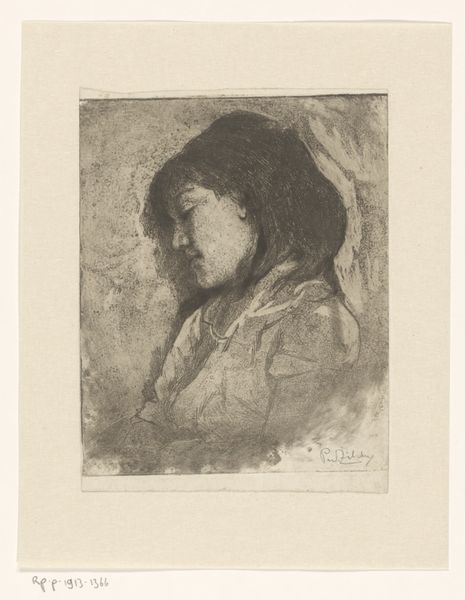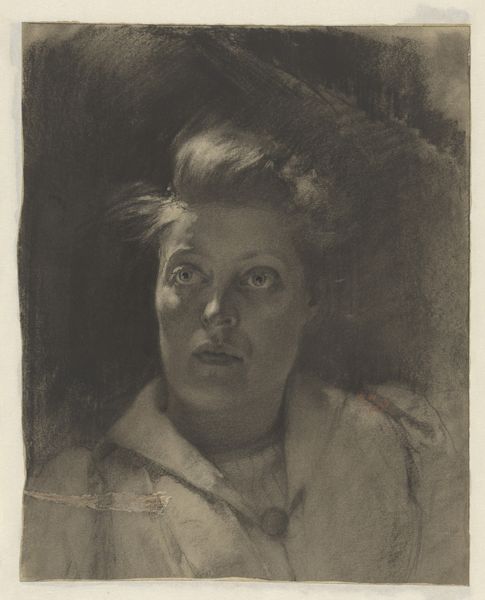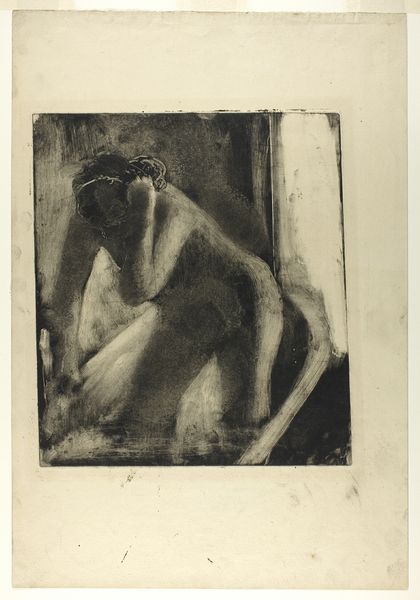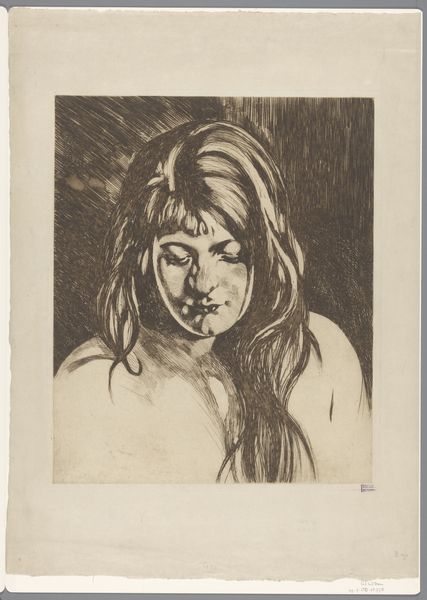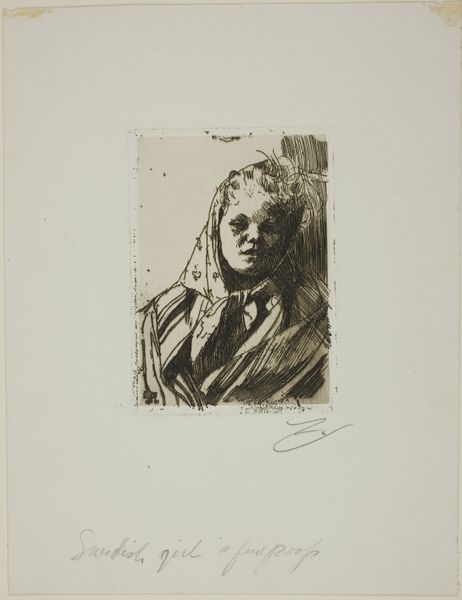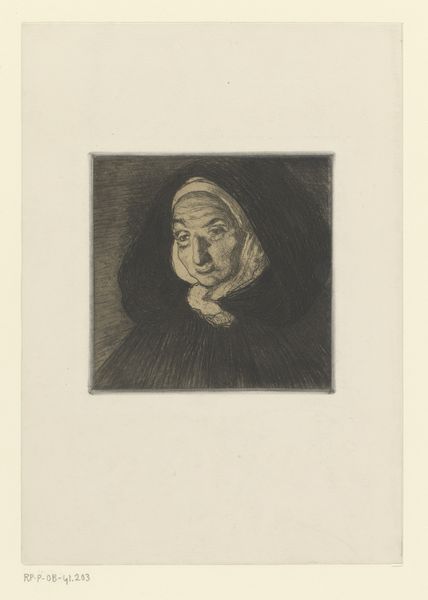
drawing, print, etching, paper
#
portrait
#
drawing
# print
#
etching
#
paper
#
symbolism
#
realism
Dimensions: 198 × 148 mm (image/plate); 284 × 219 mm (sheet)
Copyright: Public Domain
Curator: Anders Zorn, a prominent Swedish artist, created this etching titled "Gerda Lundequist" in 1909, and it is now held in the collection of The Art Institute of Chicago. Editor: The mood is instantly somber. It’s a study in contrasts – the delicate rendering of the face against the bolder, almost scratchy lines everywhere else. Curator: Yes, Zorn was known for his masterful etching technique. It is remarkable to me, though, that he chose Gerda Lundequist, a very well known actress in Sweden, for such an intimate, nearly melancholic work. This diverges somewhat from his typical commissions. Editor: Look at the varying density of lines. The darkest areas frame her face, which draws the eye directly to her expression. It is simple, almost austere in a way that suggests sadness, and yet there is a delicate luminosity achieved through subtle shading. Curator: That austerity perhaps mirrors a growing cultural unease in Sweden at the time. While the nation was neutral and progressing, there were rising social tensions and intellectual debates which often permeated into cultural works. It’s possible that Zorn captured a more vulnerable, internal persona of a public figure as a quiet critique. Editor: It’s captivating how he conveys so much with so little. The subtle use of light seems to reveal layers beneath the surface. Did Lundequist have some input here, to project an alternate identity in this form, using realism and perhaps even symbolism, to reach the viewer so directly? Curator: Indeed! And perhaps that question is part of the power of portraiture itself—the way it mediates public image with internal reality. It underscores the complexities of identity and challenges the idea of a singular truth. Editor: Zorn certainly wields his lines in a striking way in order to raise those possibilities, prompting us to ponder who we are truly viewing. Curator: Absolutely. In exploring this piece, we witness the confluence of personal artistry and a wider, restless socio-political landscape of that period. Editor: And to consider form as both reflecting content as well as revealing alternate perspectives for that time, through light and shadow. It's a work of layered visual storytelling, really.
Comments
No comments
Be the first to comment and join the conversation on the ultimate creative platform.
